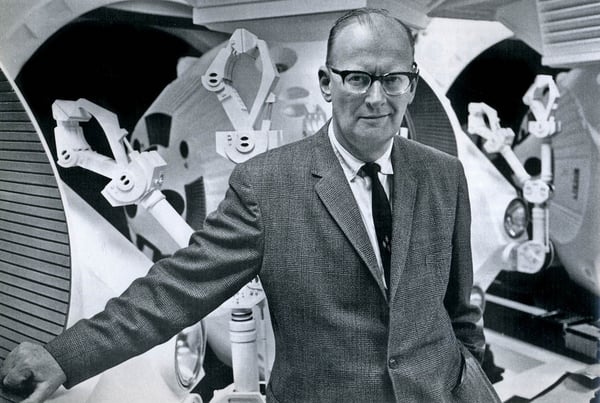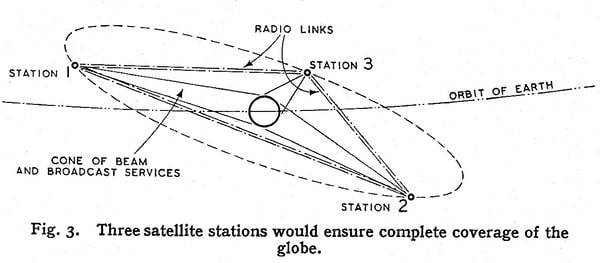Our resident engineer, Keith Wilson, looks at some of British engineering heroes you may not have previously come across for our series supporting the Year of Engineering initiative...
Here’s a little conundrum. Even if you’re not much interested in astronomy and rarely look up at the sky, you must have noticed that most of the objects in the sky – the stars, the planets, the sun and the moon – never seem to stay still. The sun, for example, crosses the whole sky every day. Now think about your satellite dish, or if you don’t have one, your neighbours satellite dish. It doesn’t move, right? Which suggests that the satellite from which it receives signals is always at the same place in the sky, all day and all year round.
How can that be? Well, this time the answer really is rocket science, if only peripherally. The satellite is in a geostationary orbit, which means that it orbits the earth at the same rate as the earth rotates and, as a result, appears to remain at a fixed point in the sky. Brilliant idea, no?
Without it, all of our satellite dishes would need complicated drive systems to keep them pointed at a moving satellite target which is, in fact, exactly the arrangement used for the very first communications satellites in the 1960s. Of course, back then there was only a handful of satellite dishes in the world rather than one on almost every roof, so the extra complication and expense was manageable!
But back to our geostationary orbit, which makes home reception from satellites feasible. Which genius first dreamed up this idea? Well, like most technological developments, it’s hard to give a definitive answer, but it’s certainly possible to say who first brought the idea to the attention of the engineering community and the public at large. And that is one of the most successful science fiction writers of the twentieth century, none other than Arthur C Clarke, the British-born author of 2001 – A Space Odyssey as well as of numerous other popular and influential novels and short stories.

Clarke first mooted his ideas about geostationary communication satellites in a letter to Wireless World magazine, which was published in the February 1945 issue. This was remarkably prescient, as the most advanced rocket of the day was the German V2, which was certainly incapable of putting even a tiny payload into a geostationary orbit. It was also before the invention of the transistor, and it’s hard to imagine a communication satellite based on fragile valve (vacuum tube) technology. And It was long before Clarke achieved fame as a writer.
He followed up his letter with a much more detailed article, which appeared in the October 1945 issue of the same magazine, where he predicts that only three satellites would be needed to provide global coverage. This is technically accurate, of course, and must have seemed a logical approach at a time when the problems of launching even one satellite were insurmountable. The first earth satellite, the tiny Russian Sputnik 1, wasn’t launched until 1957, and achieved nothing like a geostationary orbit.

Clarke didn’t patent his ideas, and probably couldn’t, as there is evidence of “prior art” although it seems likely he wasn’t aware of it at the time. He did, however, receive numerous accolades including the official recognition by the International Astronomical Union of a geostationary orbit as a “Clarke Orbit.” It’s interesting to speculate whether he would have seen this as a greater honour than the knighthood he received in 1998 for his services to literature!
Clarke made little or nothing from the ideas that underpinned much of today’s communication satellite technology, but he certainly did make a very considerable amount of money from his writing and lived out his later years in Sri Lanka, where he died in 2008. So now you know who you have to thank for endless repeats on 400 television channels, none of which you really want to watch.
Read about Alan Dower Blumlein - the man who made sound
Read about Tommy Flowers - don't touch that off switch!
Read about Sir John Turton Randall and Harry Boot - every home should have one!